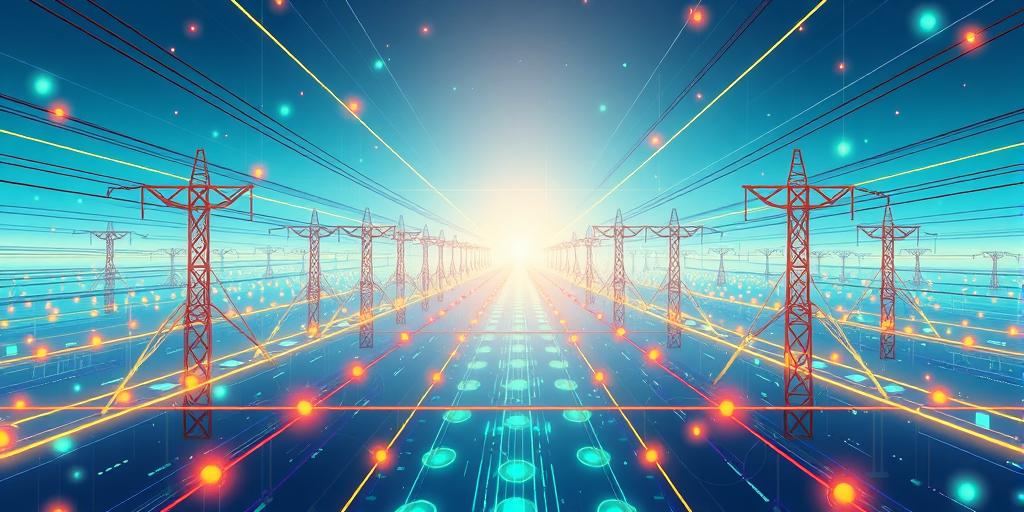Have you ever wondered how smart grids function so seamlessly, providing us with reliable power? The secret lies in the interconnected web of devices known as the Internet of Things (IoT). Prepare to be amazed as we delve into the critical role of IoT networks in powering the smart grids that keep our modern world running. From improved energy efficiency to enhanced grid resilience, IoT’s impact is nothing short of transformative. Let’s explore why IoT networks are so essential for a smarter, more sustainable energy future!
Enhanced Grid Monitoring and Management
Smart grids leverage IoT sensors and devices strategically placed throughout the power grid. These sensors collect real-time data on everything from voltage and current levels to energy consumption patterns and equipment status. This continuous stream of data empowers grid operators with unprecedented insights into the health and performance of the system. Imagine having a comprehensive, real-time dashboard showing the status of every component in the vast network—that’s the power of IoT.
Real-Time Data Analysis
This data isn’t just passively observed; it’s actively analyzed using advanced algorithms and machine learning. By processing this data in real-time, grid operators can identify and address potential problems before they escalate into widespread outages. Think of it as having a highly advanced predictive maintenance system, constantly monitoring for potential issues and alerting operators to prevent significant problems.
Improved Grid Stability and Reliability
With real-time monitoring and predictive maintenance, the grid becomes significantly more stable and reliable. IoT facilitates the identification and mitigation of potential threats, reducing the frequency and severity of power outages. This translates into enhanced reliability and reduced disruptions for homes and businesses alike. This proactive approach is revolutionizing how we ensure a steady supply of electricity for our daily needs. No more unexpected blackouts – the smart grid is here to stay!
Advanced Grid Automation and Control
The integration of IoT devices enables advanced automation and control capabilities within smart grids. By remotely controlling various grid components, operators can optimize energy distribution, respond quickly to changing demands, and improve the overall efficiency of the power network. It’s a shift from reactive management to proactive control, a paradigm shift that is changing the game in how we handle electricity distribution.
Smart Meter Integration
Smart meters, a cornerstone of IoT in smart grids, provide real-time energy consumption data to both consumers and utilities. This enables time-of-use pricing, personalized energy management tools, and the identification of energy waste, driving consumers towards energy conservation. It’s about empowering consumers to actively participate in efficient energy use – it’s a win-win for everyone!
Automated Fault Detection and Isolation
IoT enables automated fault detection and isolation, drastically reducing the time to restore power after outages. Intelligent sensors detect fault locations, automatically isolate affected areas, and reroute power around the problem, minimizing disruptions and maximizing service availability. In the past, fixing these issues took significantly more time. IoT has revolutionized this process, minimizing downtime and ensuring a consistently available energy supply.
Enhanced Grid Resilience and Security
Integrating IoT into smart grids significantly improves grid resilience and security. By providing real-time insights into the grid’s health, IoT facilitates proactive measures to mitigate potential threats and minimize vulnerabilities. This translates to a more robust and secure energy infrastructure that can withstand various challenges, from natural disasters to cyberattacks.
Advanced Cybersecurity Measures
Of course, with increased connectivity comes increased responsibility for security. IoT deployments in smart grids must incorporate robust cybersecurity measures to protect against cyber threats. Encryption, access controls, and regular security audits are crucial components of a secure IoT infrastructure for the smart grid. Security is paramount in this interconnected network, and neglecting it can have disastrous consequences.
Improved Disaster Response
During natural disasters, real-time data from IoT sensors enables grid operators to assess the damage, prioritize repairs, and quickly restore power to critical infrastructure. This quick response minimizes the impact of disasters and ensures faster recovery times for communities affected by outages. The importance of this capability in our increasingly disaster-prone world cannot be overstated.
The Future of IoT in Smart Grids
The future of IoT in smart grids is bright and brimming with potential. Ongoing advancements in IoT technologies, such as artificial intelligence (AI) and machine learning, are expected to further enhance grid efficiency, resilience, and security. As technology continues to evolve, we can expect even greater advancements in the coming years. It’s an exciting time to be part of the energy revolution!
The integration of IoT into smart grids isn’t just an upgrade; it’s a fundamental shift in how we manage and utilize our energy resources. By providing real-time data, advanced automation, and enhanced resilience, IoT is paving the way for a cleaner, more efficient, and more reliable energy future. Are you ready to join the smart grid revolution? Learn more today!

